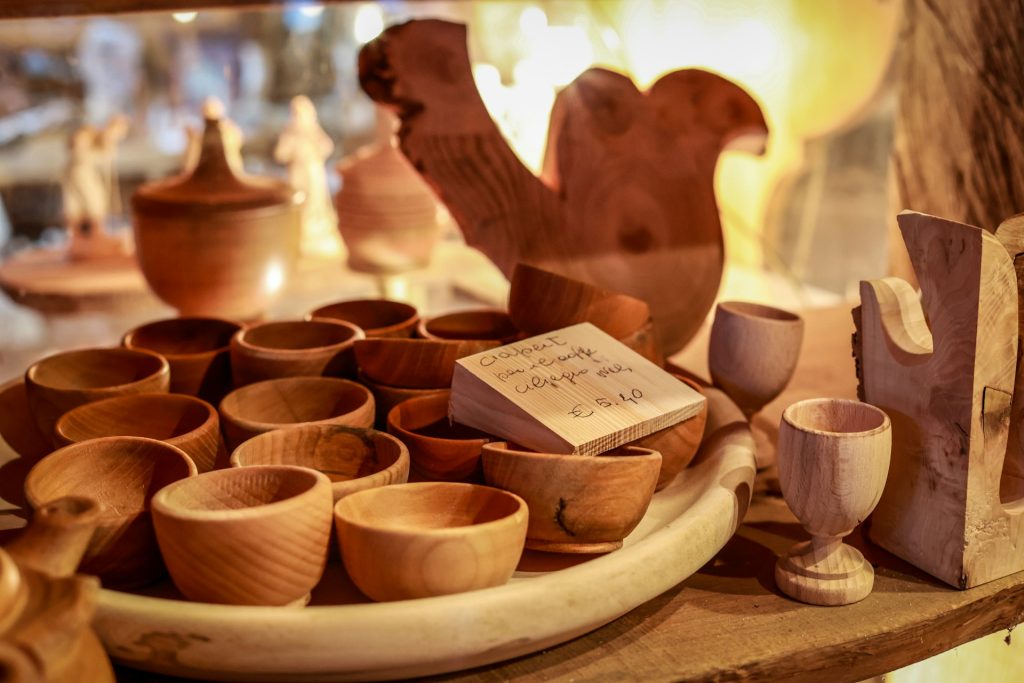Table of Contents
The secret to time travel was hidden in the wrinkled hands of an old woman weaving intricate patterns on a loom in the Peruvian Andes. As I watched her work, I realized I was witnessing not just the creation of a textile, but the preservation of an entire culture.
Artisan crafts are more than just beautiful objects – they’re living links to the past and powerful tools for cultural preservation. Through my travels, I’ve discovered that these ancient skills hold the key to keeping traditions alive in our rapidly changing world.
The Language of Hands: Storytelling Through Craft
Every handmade object tells a story. It’s a language spoken not with words, but with textures, colors, and patterns passed down through generations.
In a small village in Rajasthan, I met a family of block printers creating vibrant textiles using techniques unchanged for centuries. Each stamp pressed into the fabric wasn’t just creating a design – it was imprinting the history and values of their community.
These artisans weren’t just preserving a craft; they were keeping their cultural narratives alive, one piece at a time. Their work spoke volumes about their heritage, beliefs, and way of life.

The Economics of Tradition: Sustaining Communities Through Craft
Artisan crafts aren’t just about preserving the past – they’re often vital for sustaining communities in the present. Many traditional societies rely on their unique crafts as a source of income and cultural identity.
Visiting a cooperative of women weavers in Guatemala, I saw firsthand how their intricate huipil blouses were not only preserving Mayan traditions but also providing economic independence. Their craft allowed them to support their families while maintaining deep connections to their heritage.
The Apprentice’s Journey: Passing Down Ancient Knowledge
One of the most critical aspects of cultural preservation through craft is the transmission of knowledge from one generation to the next. This process is both beautiful and fragile.
In Japan, I had the privilege of observing a master swordsmith working alongside his apprentice. The level of dedication and patience required was staggering – years spent learning the subtleties of tempering steel and honing perfect edges.
These master-apprentice relationships are the lifeblood of artisan traditions. They ensure that the intricate knowledge and skills developed over centuries continue to live and evolve.
Innovation Within Tradition: Keeping Crafts Relevant
While preservation is key, the most successful artisan communities I’ve encountered find ways to innovate within their traditions, keeping their crafts relevant in the modern world.
In Morocco’s medinas, I watched as traditional zellige tile makers incorporated contemporary designs into their ancient geometric patterns. This fusion of old and new attracted a fresh audience while maintaining the essence of their craft.
The Ritual of Creation: Craft as Spiritual Practice
For many artisans, their craft is more than a skill – it’s a form of spiritual practice, a way of connecting with their ancestors and the divine.
Participating in a traditional batik-making ceremony in Indonesia, I was struck by the reverence with which each step was performed. The application of wax, the dyeing of fabric – each action was imbued with meaning and intention.
These rituals of creation do more than produce beautiful objects; they maintain spiritual traditions and worldviews that might otherwise be lost in our increasingly secular world.
The Global Marketplace: Challenges and Opportunities
The rise of global tourism and e-commerce has created both challenges and opportunities for artisan communities. On one hand, it provides access to larger markets; on the other, it can lead to commodification and loss of authenticity.
Visiting a weaving village in Laos, I saw how increased demand from tourists had both sustained the community economically and put pressure on artisans to produce faster, sometimes at the expense of quality and traditional methods.
The Power of Place: Geographical Indications and Craft Preservation
Many traditional crafts are inextricably linked to their place of origin. This connection to geography isn’t just about tradition – it’s becoming an important tool for cultural and economic preservation.
In the Champagne region of France, I learned how strict regulations around the production of their famous sparkling wine have helped preserve not just a product, but an entire way of life. The same principles are being applied to artisan crafts around the world.

The Tourist’s Dilemma: Authentic Experiences vs Exploitation
In a small pottery village in Vietnam, I watched as busloads of tourists arrived, eager to see “real” artisans at work. While the economic boost was evident, I couldn’t help but wonder how this constant scrutiny was affecting the natural rhythm of the community’s craft.
Finding a balance between supporting artisan communities through tourism and preserving the genuine nature of their crafts is a challenge that requires thoughtful consideration from both travelers and local communities.
The Language Barrier: Preserving Crafts, Preserving Languages
Often, traditional crafts are deeply intertwined with endangered languages. The vocabulary of these crafts – specialized terms for techniques, tools, and materials – can be a repository for language preservation.
While learning about traditional weaving in Peru, I discovered that many of the terms used were in Quechua, an indigenous language under threat. The preservation of the craft was also helping to keep this ancient language alive.
The Gender Dynamics of Craft: Empowerment Through Tradition
In many cultures, traditional crafts have strong gender associations. While this can sometimes reinforce restrictive gender roles, I’ve also seen how these crafts can be powerful tools for women’s empowerment.
Visiting a collective of female pottery makers in Mexico, I was struck by how their traditional craft had become a means of economic independence and community leadership. These women were preserving their heritage while also challenging societal norms.
The Environmental Impact: Sustainable Practices in Traditional Crafts
Many traditional crafts evolved in harmony with their local environments, using sustainable practices long before it became a global concern. However, increased demand can sometimes push these practices to their limits.
In Bali, I saw how traditional batik makers were grappling with the environmental impact of their dyes. Some were reverting to ancient, natural dyeing techniques, not just as a nod to tradition, but as a response to modern environmental concerns.
The Digital Archive: Preserving Craft Knowledge for the Future
While nothing can replace the hands-on transmission of craft skills, digital technology is playing an increasingly important role in documenting and preserving traditional knowledge.
I’ve encountered fascinating projects around the world, from 3D scans of intricate carvings in Bhutan to video archives of master craftspeople in Italy. These digital records ensure that even if a craft tradition fades, the knowledge won’t be entirely lost.

Crafting the Future: Your Role in Cultural Preservation
Every handmade object you bring home from your travels is more than just a souvenir – it’s a piece of living history, a thread connecting you to centuries of tradition and human creativity.
What will be your next artisan journey? What stories will you uncover, what traditions will you help preserve? The world of traditional crafts awaits, full of beauty, meaning, and the enduring spirit of human creativity.

I’m Simon St John, an editor who thrives on finding the profound moments in travel. With a background in crafting engaging stories for all generations, I delve into both grand adventures and simple discoveries. Through Tripnosis.me, I aim to showcase how travel can be a powerful catalyst for personal growth and deeper connections. My goal is to present fresh narratives that inspire and redefine your travel experience.




